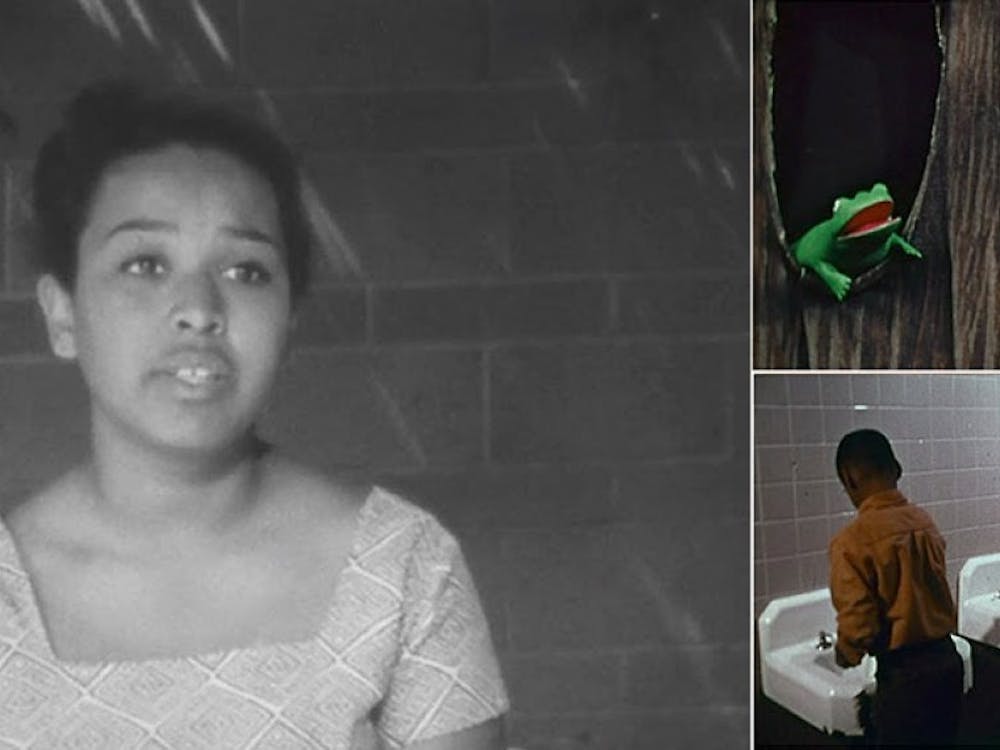Organized by the Cinematic Arts at Duke, Screen/Society is a beloved film programming body in the Triangle area. Their most recent presentation on Sep. 4, “Screening Race: Short Films of the 1960s & 1970s,” examined how educational, non-theatrical films portrayed race in classrooms, churches and community centers all across America.
This curated series of four short films was inspired by the recently published essay collection, “Screening Race in American Non-Theatrical Film,” which was co-edited by Marsha Gordon, a Film Studies professor at NC State, and Allyson Field, a Cinema and Media Studies professor at the University of Chicago. These film experts were drawn to these non-theatrical films because of their surprisingly nuanced representation of minorities.
“Unlike the Hollywood studios during that time, which were run largely by white men, the educational film market was operating on a smaller scale.” remarked Dr. Field. “This was an opportunity for more independent work to freely explore content not seen on the big screen.”
When watched in succession, the films allowed the audience to draw overarching lessons about youth, family and belonging in the crossroads between conflicting identities. The films were mostly targeted towards children, so the messages being taught were somewhat simplified, but still effective in introducing new perspectives.
“These films are meant to get kids to talk about things, like where is your family from? How is this family similar or different to yours?” said fellow panelist Skip Elsheimer of A/V Geeks. “By giving the kids something to get excited about, they are able to think critically.”
The first film, “Birthday for Grandma,” (1976) follows a young Chinese-American girl who ventures into the streets and shops of Chinatown to pick up her grandma’s birthday cake. The film subtly explores culturally specific ideas of independence and expectations for children that might be different from other American households. The young girl, Pamela, playfully bounces between her American and Chinese identities with her food preferences and questions of cultural difference and assimilation as she roams throughout the city.
“Minority Youth: Adam,” (1971) reflects upon a young Native-American man who hopes his Indigenous culture does not fully fade away. The film follows Adam being teased by his classmates at school, playing games in his backyard and performing traditional dances with his tribe, which juxtaposes his two disparate modes of living. He wants to learn from his grandmother about passing down history and upholding their traditions. Rather than assimilating into a society that is prejudiced against him, Adam plans to live on the reservation and protect his heritage.
The third film, “Felicia,” (1965) follows a day in the life of a young Black woman growing up in Los Angeles. Felicia examines her racial identity in the context of her primarily white school and her home in Watts, a neighborhood with a reputation as a low-income, high-crime area due to the Watts Riots that occurred a few months after filming. The film presents the country’s diverse youth as hope for the future in the face of racial tensions. To Felicia, the film is a home movie, a record of her family during a tumultuous time. As she walks along the railroad tracks nearby, Felicia reflects upon her aspirations to attend college and help her community.
The final film, “Ro-Revus Talks About Worms,” (1971) warns young audiences in rural South Carolina about the dangers of intestinal parasites, narrated by a playful pair of frog and squirrel puppets. They instruct these children about washing their hands, not eating dirt and not using the outdoors as their bathroom. The film addresses widespread malnutrition and unsanitary living conditions in the South and uses young actors of diverse races to target these areas. Complete with hand-drawn animations and microscopic shots of parasites, the film tackles this otherwise grim issue with a silliness that can be enjoyed by children of all backgrounds.
Screen/Society will continue to present films online on their Twitch channel, where audience members can contribute their thoughts during the streams in the comment section. In this upcoming fall semester, Screen/Society is collaborating with the John Hope Franklin Humanities Institute to present the Antigone Film Series, which consists of four films that handle the political turmoil and grief exhibited in Sophocles’s ancient tragedy, “Antigone.” The first film in the series, “Germany in Autumn” will be shown Sep. 11.
On Sept. 16, “Miss Juneteenth,” which premiered at Sundance earlier this year, will be presented in a collaboration between Screen/Society, DukeCreate and DEMAN Live. It will be followed by a Q&A on Zoom with writer/director Channing Godfrey Peoples, producer and Duke alumnus Neil Creque Williams and other cast and crew members of the film.
Get The Chronicle straight to your inbox
Signup for our weekly newsletter. Cancel at any time.

